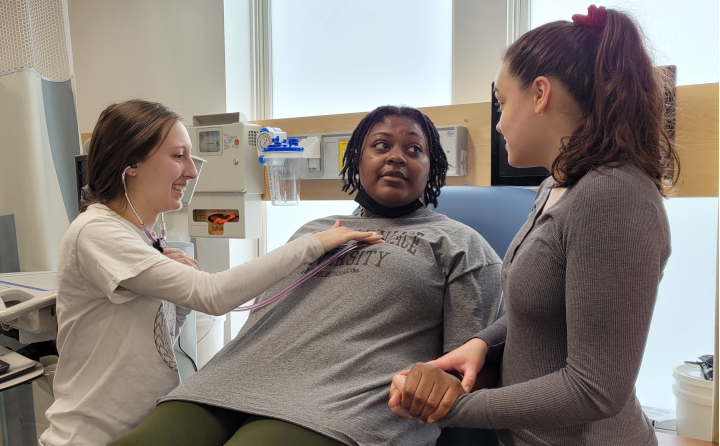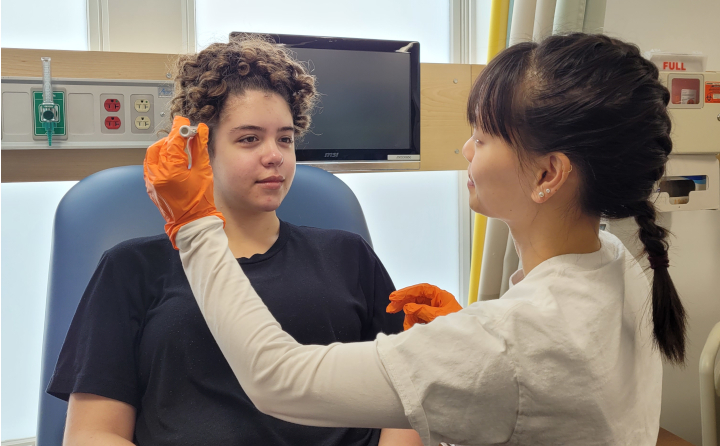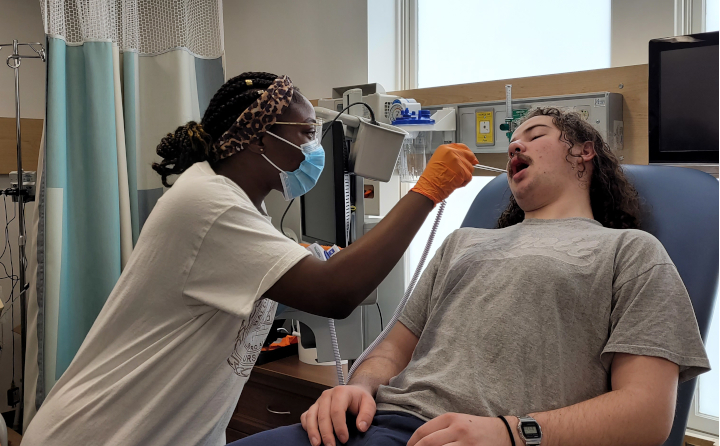
No one will disagree that the nursing profession is both an art and a skill. However, the "art of nursing" can't be gleaned from textbooks or lectures. It comes from meaningful interactions with patients.
So how can that be replicated in the nursing lab? At Baldwin Wallace, the answer lies in a new collaboration between the BW department of nursing and the department of theater and dance.
BW theatre students are learning standardized patient (SP) skills to simulate patient-nurse encounters in a controlled learning environment. The collaboration is being led by Heidi Harris, lecturer in acting; Keira McDonald, associate professor, department of theatre and dance; and Chris Seminatore, lab coordinator and assistant professor of nursing.
"As a professional actor and standardized patient, myself, I understand the value of interaction between SPs and students in the field of medicine," said Harris. "So, when the opportunity to collaborate with BW's nursing department on simulations came along, I knew it was something that would benefit both departments."
 The new program provides risk-free opportunities for both acting and nursing students to strengthen their skills.
The new program provides risk-free opportunities for both acting and nursing students to strengthen their skills.
"By simulating controlled medical scenarios, both the SP and the nursing student can engage in encounters where there may be truly high stakes (i.e., talking about a difficult diagnosis, asking questions to elicit a medical history from a patient, etc.) without the fear of making a mistake," Harris explained.
"Because it is a simulation, we have the opportunity to essentially 'rewind' or 'restart' the encounter to allow the nursing student to make different choices for a potentially more successful outcome. At the same time, theatre and dance students get to hone their improvisational skills within a set of parameters, being as truthful to the patient's circumstances as possible. This is a win-win situation!"

Unlike medical simulation mannequins, standardized patients are trained to give verbal responses, display emotions and react to the nursing student like an actual patient. Time spent in the nursing lab with standardized patient actors allows nursing students to practice communication, patient assessment, physical examination and clinical skills with real people.
"The use of standardized patients has enhanced the learning experience for nursing students by creating opportunities to practice therapeutic, culturally sensitive and efficient communication skills," said Seminatore. "Many healthcare providers require extensive patient interactions to gain experience in these skills. Through the use of standardized patients, our nursing students can begin to build the communication skills needed to form relationships with patients and enhance their outcomes."
For theater students, having standardized patient acting skills opens up additional employment opportunities at hospitals and medical schools. SP jobs also provide actors with meaningful work that hones their skills in listening and responding as well as authentic behavior within a semi-scripted scenario while pursuing their "big break" into show business.
Both departments hope to expand the fledgling collaboration. With BW's new four-year Bachelor of Science in Nursing (BSN) and top-rated, 15-month Accelerated Bachelor of Science in Nursing (ABSN) programs to support, the standardized patient program is looking to involve nursing and acting students in the creation and training of patient simulations. The hope is to develop the art of both disciplines.